OnePlus 11 review: a leading flagship in almost every way
The OnePlus 11 is undeniably a step up from its predecessor and because of that it looks set to be one of the best phones of the year
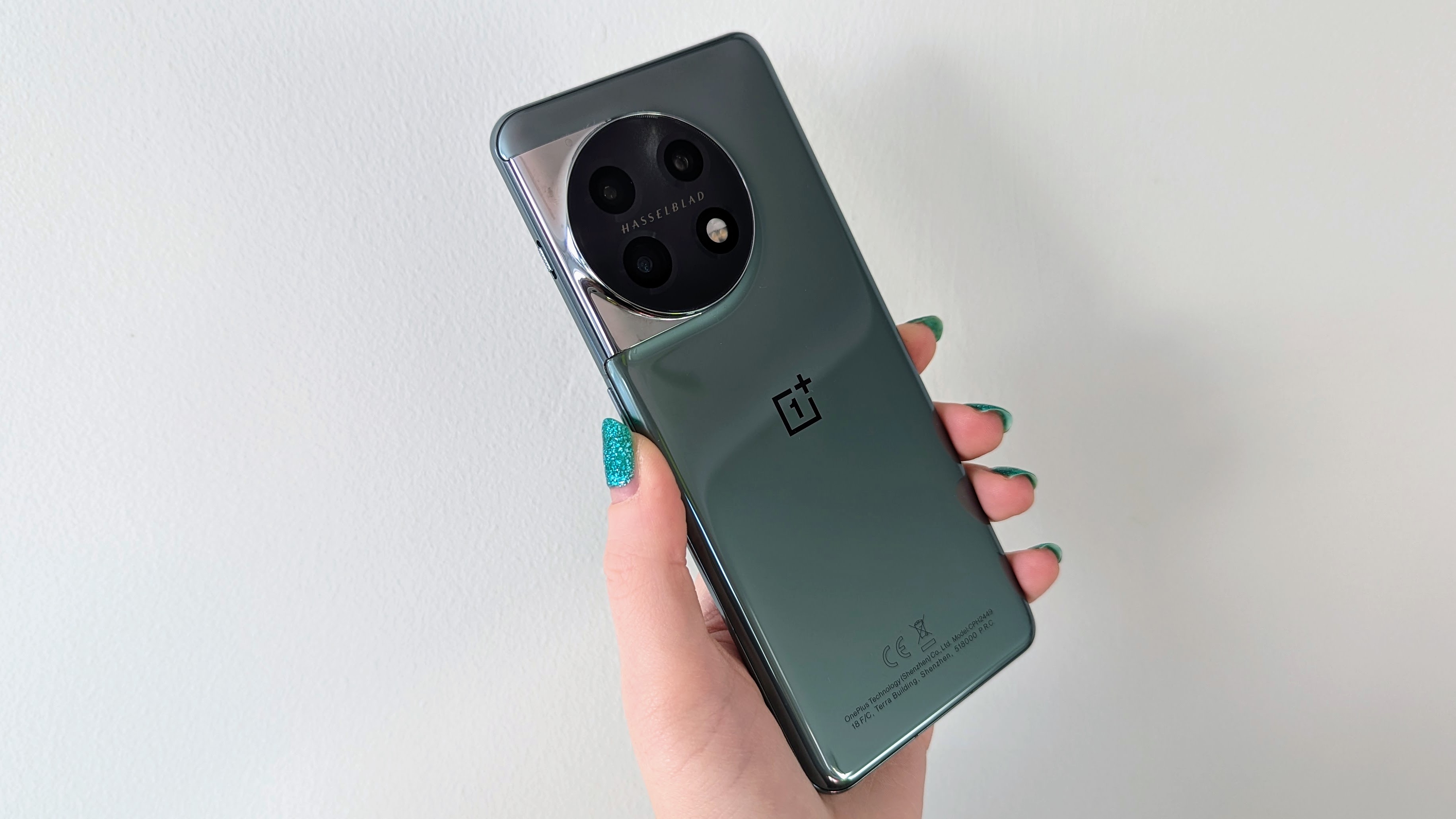
The OnePlus 11 is every bit the flagship smartphone but it doesn't cost quite as much as some of the other top players. You can expect a stunning screen, a stylish design, a seriously good snapper and speedy performance. The only downside is the battery which doesn't last as long as we'd have hoped.
-
+
6.7-inch QHD+ LTPO display
-
+
Qualcomm Snapdragon 8 Gen 2
-
+
Impressive point-and-shoot photography
-
+
100W fast charging
-
-
Underwhelming battery life
-
-
No MicroSD card slot
-
-
Weak zoom on the camera
Why you can trust T3

If I were to cut to the chase of this OnePlus 11 review I’d have to point out that this is one of the best Android phones of the year so far. Why? Because it manages to combine an impressive camera system with a luxurious design, a crisp display and decent speeds, but it won’t cost you quite as much as some other devices out there.
OnePlus has managed to push through the crowd in recent years cementing itself as one of the best phone makers in the world, going up against the likes of Samsung, Google and Sony in the race for the Android crown.
Back in 2022, the OnePlus 10 Pro caused a stir thanks to its super-fast charging capabilities and impressive shooter, so here at T3, we were pretty excited to see what the Chinese manufacturer had in store for us next. Almost a year on, the OnePlus 11 has officially landed on our shores alongside the OnePlus Buds Pro 2 which is their latest true wireless earbud offering. It's without a doubt the best OnePlus phone yet.
The latest handset drops the ‘Pro’ title, but it’s still an evolution of the 10 Pro that came before it. I’ve had an early look at the new phone and in this OnePlus 11 review, you’ll be able to find out exactly what I thought about its design, display, camera system, performance and battery.
OnePlus 11 review: price and what’s new
For the OnePlus 11 with 128GB of storage and 8GB of RAM, you’re looking at spending £729 in the UK (about $829 in the US). Or to up that to 256GB of storage, it’ll be £799/$899. You will also be able to buy this with 16GB of RAM.
The OnePlus 11 is a step above the OnePlus 10 Pro in a few different ways. While similar in design, the shape of the camera module has been revised from a square to a circular notch, and the selection of colourways available has changed too, you’ll be able to buy the latest phone in Eternal Green and Titan Black.
You get the same QHD+ LTPO screen, but under the hood, things have had a bit of an upgrade with the new Qualcomm Snapdragon 8 Gen 2 CPU alongside a maximum of 16GB of RAM, where it was 12GB before. While the battery is the same size, you now get a 100W charger included in the box, as opposed to 80W before, which should mean even faster charging.
The camera setup has also had a shift moving from a 48MP main camera, a 50MP ultra-wide camera and an 8MP telephoto lens to a 50MP main camera, a 48MP ultra-wide camera and a 32MP portrait tele camera. Both phones have a 32MP selfie snapper.
OnePlus 11 review: design and display
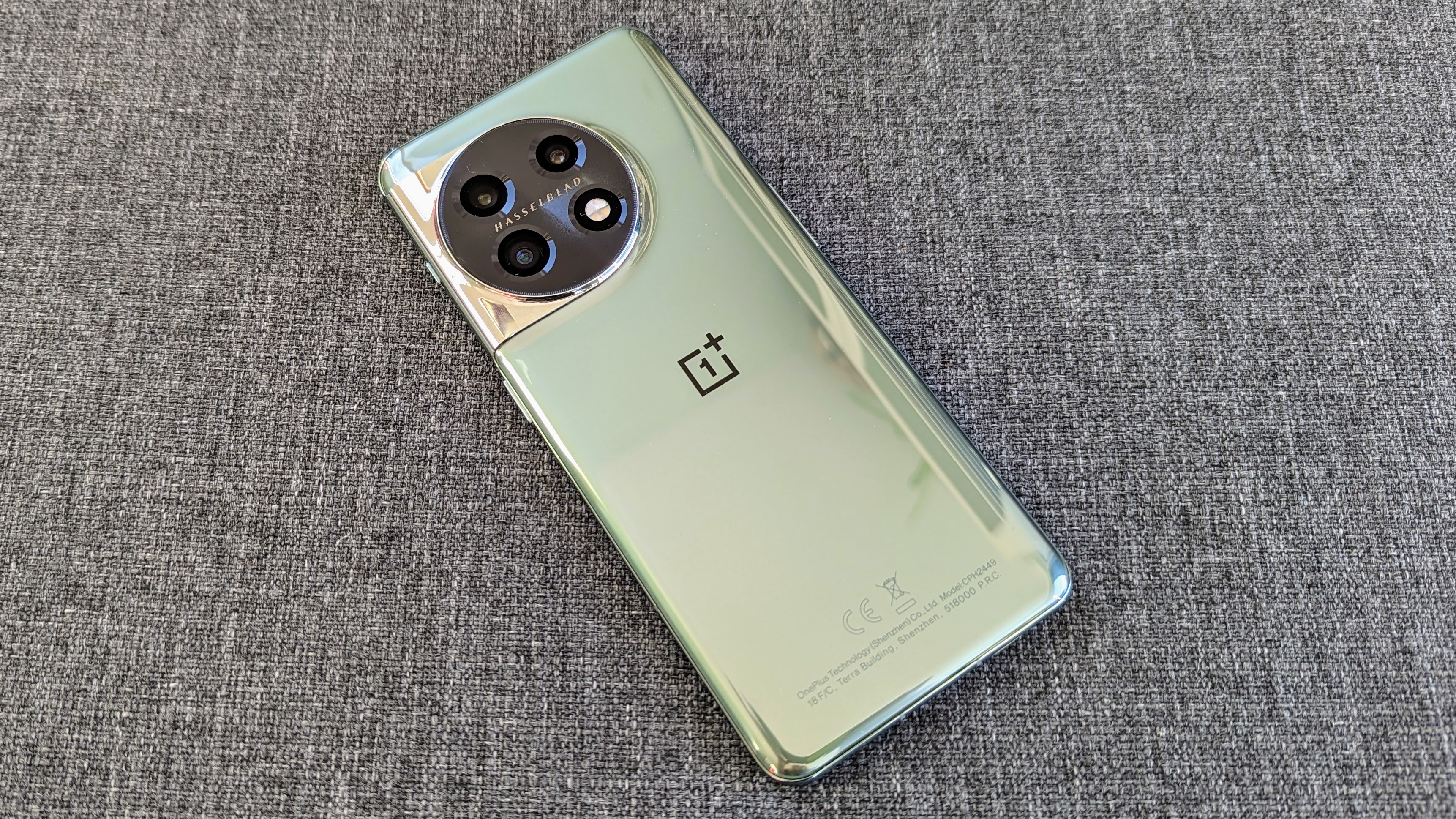
Although each iteration of the OnePlus flagship looks a bit different, there’s a clear design language that runs across them all.
Just like its predecessors, the OnePlus 11 features a curved screen and a glossy frame, while on the back the stainless steel camera module sits in a similar position and wraps around the edge of the handset like we’ve seen before, although this time they’ve opted for a rounded notch instead of a square. The new design is both sleek and sophisticated, although naturally, some people might prefer the styles of the past.
You’ll be able to buy the OnePlus 11 in a couple of different colourways. Titan Black is a matte block of colour that glistens in the light, whereas the Eternal Green option is glossy and reflective. I tried out the latter and it looks really quite elegant - you also won’t need to worry about fingerprint marks because that didn’t seem to pose a problem during testing.
On the back, the phone sports Gorilla Glass 5 while the front boasts Gorilla Glass Victus, so both sides should be pretty resistant to drops, knocks and scrapes. What’s more is that for the first time, OnePlus’ flagship has an official IP rating, namely IP55 which means that it’ll be resistant to splashes of water as well as dust and dirt. No more worries about any little accidents or sudden downpours.
Around the frame, you’ll find the usual USB-C charging port, power button and volume rocker, but to add to that you’ll get OnePlus’ staple alert slider which makes it super quick and easy to switch between Ring, Silent and Vibrate.
A SIM card slot sits along the bottom edge as well, but you can also load the phone up with an eSIM if you'd rather not fiddle around with a physical card.
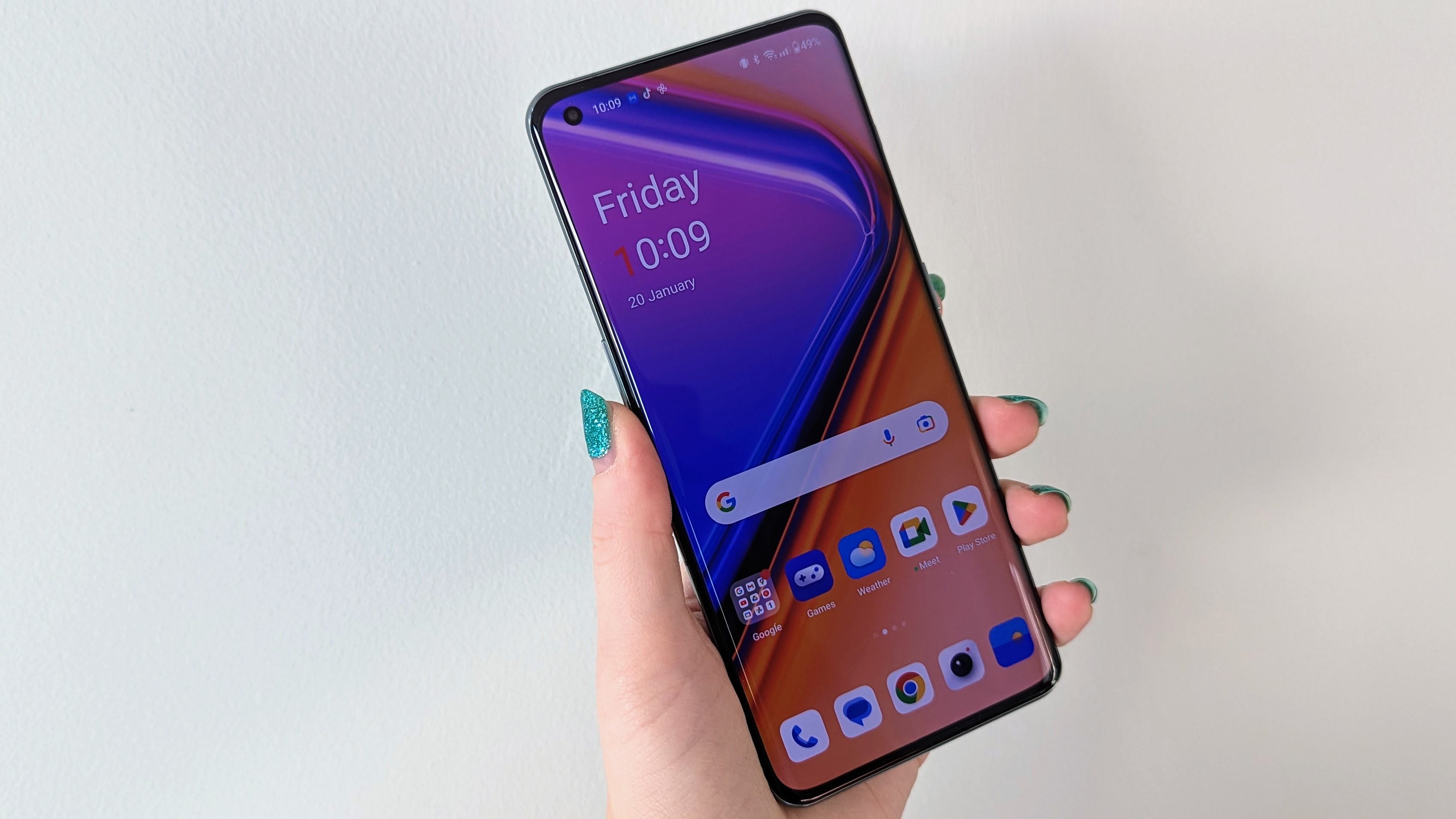
In my hand, the OnePlus 11 feels relatively comfortable, if a little slippy. It’s about the same size as the OnePlus 10 Pro, measuring 163.1 × 74.1 × 8.53 mm but it's ever so slightly heavier weighing 205g. If like me, you have small hands, your thumb won’t quite reach across the whole width of the screen but for anyone else, the long thin design will be ideal.
Speaking of the screen, the OnePlus 11 uses a Super Fluid AMOLED 6.7-inch display with a resolution of 3216 x 1440p (QHD+) and a peak brightness of 1300 nits. You get HDR10+ support as well as Dolby Vision, and to add to that, you’ll be able to view 10-bit photography on it which isn’t always the case in other high-end flagships.
Long story short, the screen is absolutely stunning. Whether you’re editing your shots or streaming Netflix, it’ll look bright with accurate bold colours and impressive contrast too.
What’s more, this uses LTPO 3.0 screen technology, which means it can automatically adjust its refresh rate from as little as 1Hz up to 120Hz depending on the task at hand. So not only does it feel silky smooth to scroll and swipe on but it also will drop the refresh rate to conserve battery when and where it can.
To unlock the phone, you get the choice of the usual passwords and pins, as well as an in-display fingerprint scanner and facial recognition. I opted for the fingerprint for most of the time I spent trying out the phone and found that it logged me in quickly and efficiently every time.
OnePlus 11 review: camera
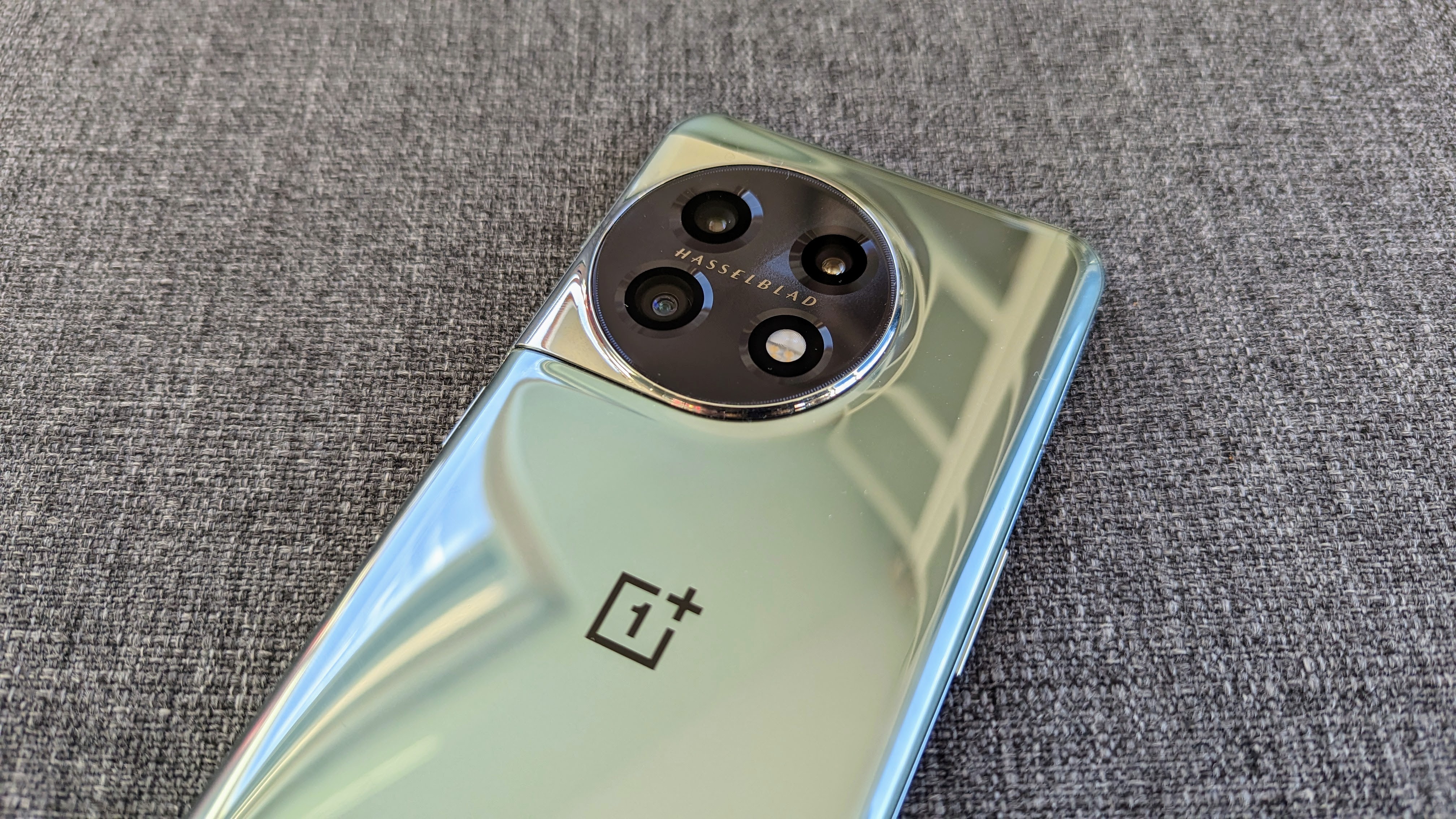
On the OnePlus 11, the rear camera set-up is made up of 50MP IMX890 main camera with a large 1/1.56" sensor, a 48MP ultra-wide camera with a 1/2" sensor and 115-degree field of view, and a 32MP portrait tele camera, with a 32MP selfie camera on the front. Tuned by camera manufacturer Hasselblad, the camera is a huge draw to OnePlus' flagship phone.
As you can see from the gallery of sample shots below, the results are stunning, mostly because the shooter picks up colour really well on the default point-and-shoot settings thanks to Natural Color Calibration with Hasselblad. You can see each shade in the sky, the varying blues in the sea, and the pinks in the flowers really pop. Each scene is vibrant and full of life without looking unrealistic, even when it comes to the snaps taken on a slightly cloudier day.







To make these photos even better, it would have been nice to get a better level of automatic contrast between the light and dark areas of the shot, that’s the only thing that stops the photos from being truly jaw-dropping.




When you start playing around with some other camera features, the results do admittedly vary, as you can see above. The ultrawide mode does a great job of fitting more into the image without losing out too much on detail. However, you can see that it doesn’t do such a great job at boosting colours and contrast.
Similarly, the zoom function greatly reduces the image's quality even on just 2x zoom. Up that to 10x zoom and suddenly what you get is hardly even useable. It has a lot to learn in comparison to some other smartphone cameras in that sense.
OnePlus 11 review: performance and battery

Packed inside the OnePlus 11 is the latest Qualcomm Snapdragon 8 Gen 2 processor, an Adreno 740 GPU, up to 16GB of RAM and up to 256GB of storage.
This is one of the first devices to use that new CPU and the difference it makes is huge, this phone feels really speedy. Even opening up large mobile games feels like a breeze. It didn’t lag or heat up even when you have a bunch of apps open at once, which will be handy for anyone who forgets to close apps as they use them.
I ran a Geekbench 5 benchmarking test on the OnePlus 11 and it managed to pick up scores of 1,123 in single-core and 4,686 in multicore which is more than the speediest handsets from 2022, including the Xiaomi 12 Pro and the OnePlus 10T.
Not only is the running of the phone fast but thanks to Wi-Fi 6 and 5G, anything internet based is just as quick. Plus you get Bluetooth 5.3 here which makes for fast and reliable pairing with your other devices like true wireless earbuds or speakers.
You get the same 5,000mAh battery here as you did in the OnePlus 10 Pro. Unfortunately, this is one area the phone falls down in, I needed to charge it during the day because the battery would drop quite significantly when I used it for streaming shows and scrolling through Instagram.
I ran a test on it where I downloaded and played HD video over the space of two hours. In that time the battery level dropped by about 18% which means it would have only lasted just over 11 hours in total. That’s a long way off some other flagship smartphones like the Oppo Find X5 Pro which survived 20 hours in the same test.
Matching up to OnePlus’ claims, it took about 25 minutes to charge the phone from flat to full using the 100W charger included in the box, and while that doesn’t quite make up for what it lacks in battery life, it does help somewhat.
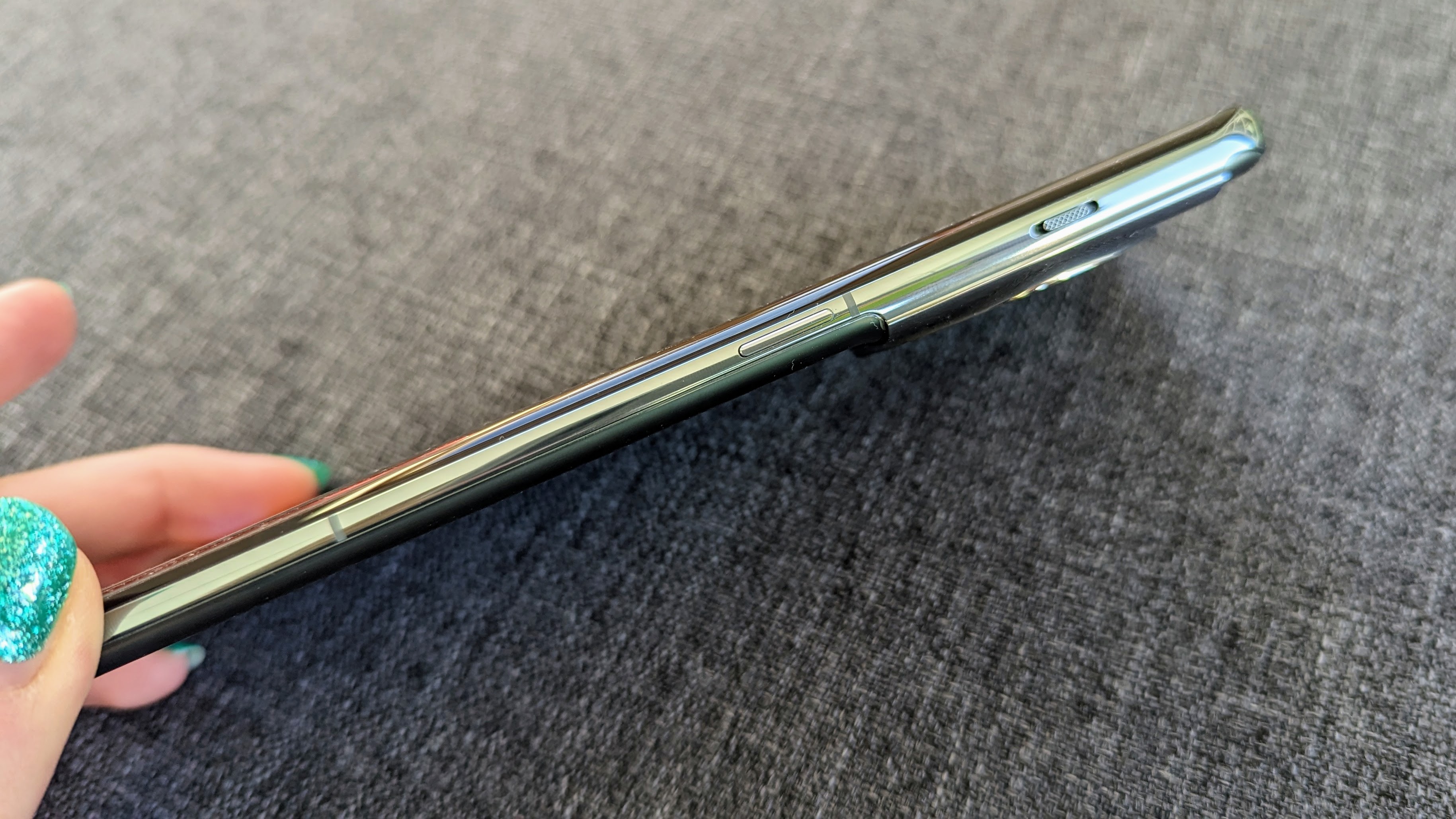
Something worth noting for American buyers out there is that you sadly won’t get the 100W charger, you’ll be limited to 80W, although that is still pretty fast.
OxygenOS 13 based on Android 13 is what supports the system, and because of that, there are lots of features worth knowing about that will help improve the day-to-day running of things. For instance, the Battery Health Engine helps to extend the longevity of the battery while the HyperBoost Gaming Engine will use AI to find the sweet spots between power consumption and gaming performance based on how you play.
Visually, the system looks great. It’s well laid out with a handy app drawer and gestures to navigate through your open apps and windows. Icons and fonts look clear and colourful without feeling childish or overpowering. And there’s the benefit of the always-on display too which activates as you pick up the handset.
With the OnePlus 11 you’ll get 4 years of Android updates and 5 years of security updates - that’s more than what most manufacturers can offer.
OnePlus 11 review: verdict
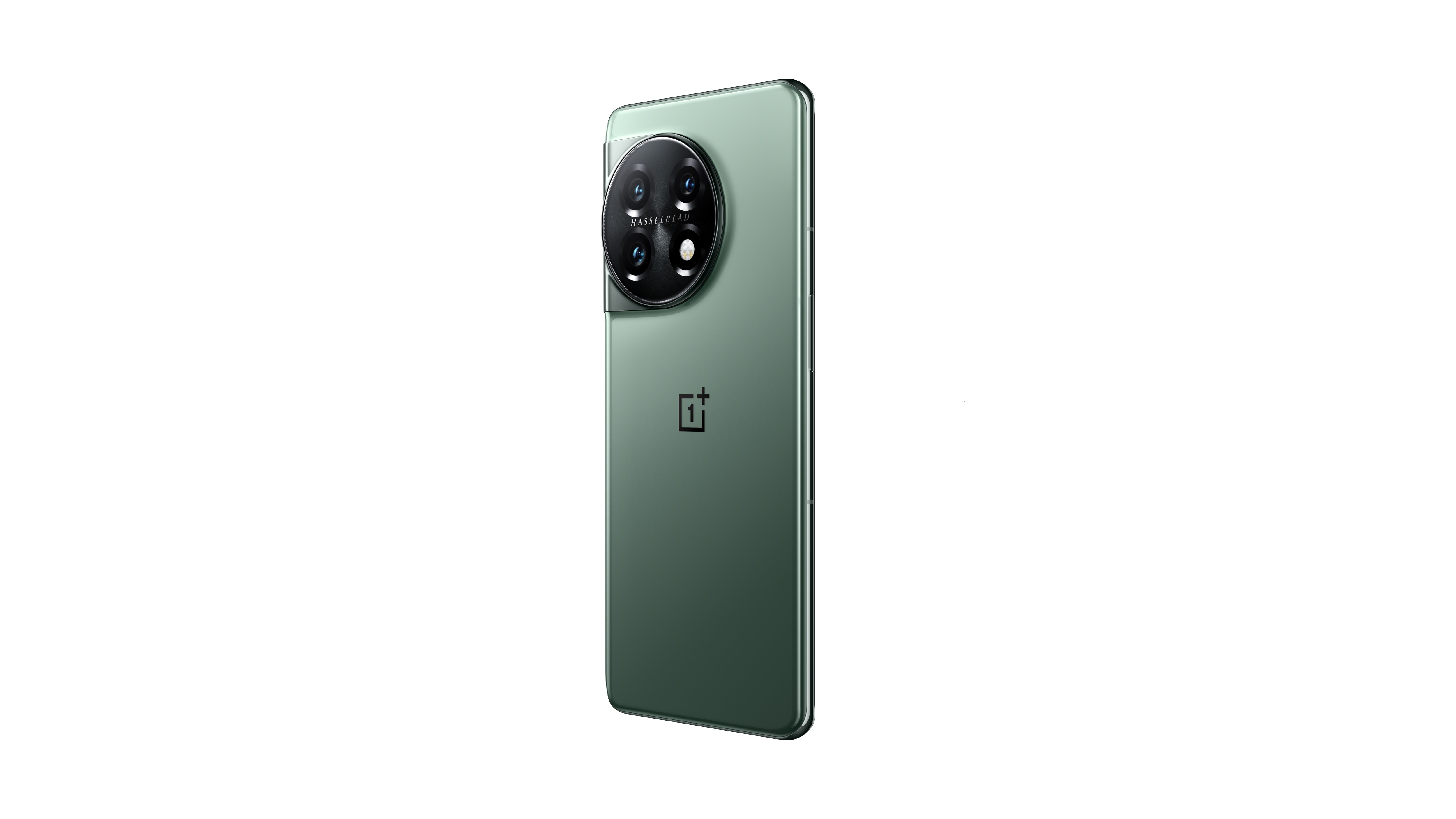
As you might have gathered from this review, the OnePlus 11 really is up there amongst some of the best phones in the world at the time of writing and the fact that it costs less than a lot of its competitors is a huge win.
The design is sure to be polarising but those who like it will absolutely love it, and OnePlus fans will be overjoyed to see the return of the alert slider. If you’re someone who cares most about the quality of the screen then this phone won’t disappoint there either because not only does it look absolutely lovely but it feels excellent to use as well thanks to the adaptive 120Hz refresh rate.
Add to that speedy performance with the latest Qualcomm Snapdragon CPU and even more avid mobile gamers will be pleased with what this handset has to offer.
As you’d expect from OnePlus, the camera system does a great job of snapping shots you can be proud of on the default settings although if you’re after substantial zoom then you’ll be better off looking towards a Samsung or even Honor flagship.
Another downside to know about is the battery life, it’s way below the standard set by other top players which could be a dealbreaker to a lot of people. If you’re hot on it with charging your phone then you might be able to look past that, especially given the fact that it’ll only take 25 minutes to charge it back up again. Because of that, you may see it as a small price to pay for an otherwise marvellous piece of kit.
OnePlus 11 review: also consider
Another leading Android choice right now is the Google Pixel 7 Pro, like the OnePlus 11, it has a jaw-dropping camera system. Still, it won’t cost as much as some of the other leading flagships. Because Google makes it you can expect more in the way of advanced AI-based features than you get here, like the Magic Eraser for your photos or speedy Live Translate, that’s thanks to the Tensor G2 chip inside.
If you don’t mind splashing the cash then you should take a look at the Samsung Galaxy S22 Ultra, it’s a top-tier smartphone with a killer camera system and seriously speedy performance, and it even comes with a stylus housed in its body. It’s likely to be the best choice for anyone who plans to use their phone for work as well as play.
Sign up to the T3 newsletter for smarter living straight to your inbox
Get all the latest news, reviews, deals and buying guides on gorgeous tech, home and active products from the T3 experts

Yasmine is the former Reviews Writer for T3, so she's been knee-deep in the latest tech products for reviewing and curating into the best buying guides since she started in 2019. She keeps a finger on the pulse when it comes to the most exciting and innovative tech – and since departing has also held a role as Digital Spy's Tech Editor. In her free time, you'll catch her travelling the globe – the perks of being a freelance tech expert – tending to her plants when at home and, but of course, planning her next big trip.
-
 Polar’s new subscription feature lands in the shadow of Garmin’s Connect+ rollout
Polar’s new subscription feature lands in the shadow of Garmin’s Connect+ rolloutPR genius or timing disaster? Polar’s new Fitness Programme adds adaptive training to its ecosystem
By Matt Kollat Published
-
 New Orient Star watches offer a glimpse of the magic within
New Orient Star watches offer a glimpse of the magic withinThere are two new skeleton pieces
By Sam Cross Published
-
 Netflix's most surprising 100%-rated sci-fi series returns with gorgeous trailer
Netflix's most surprising 100%-rated sci-fi series returns with gorgeous trailerLove Death + Robots is back for more
By Max Freeman-Mills Published